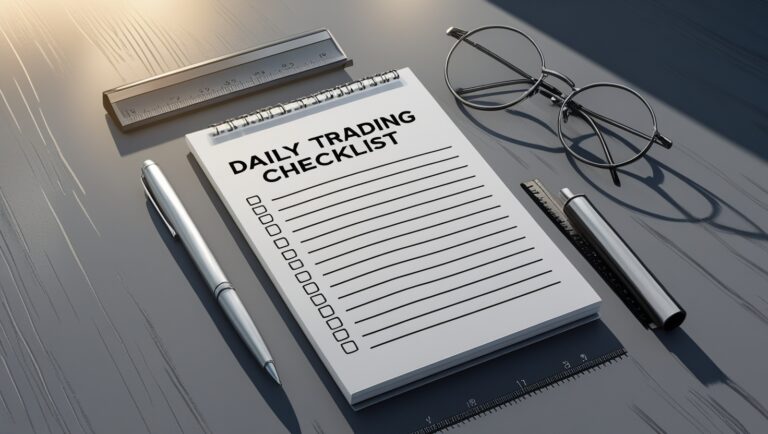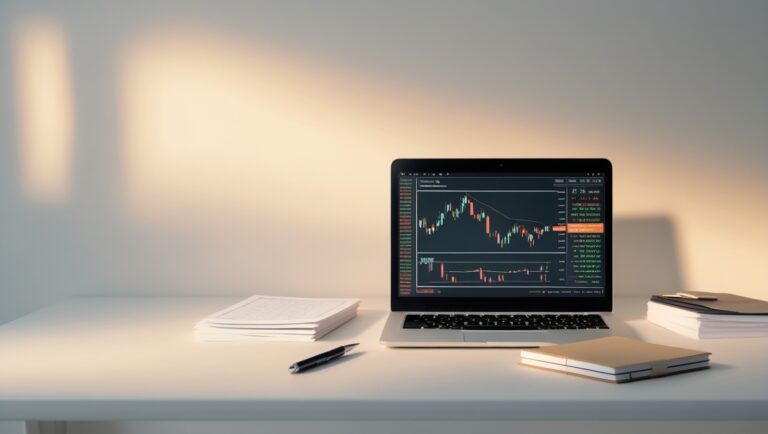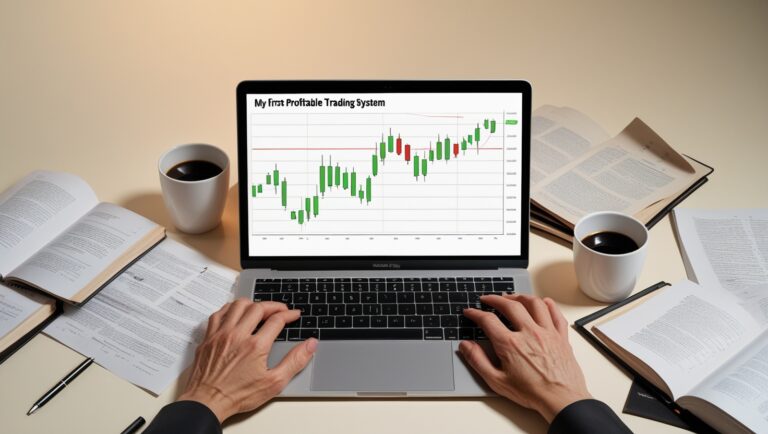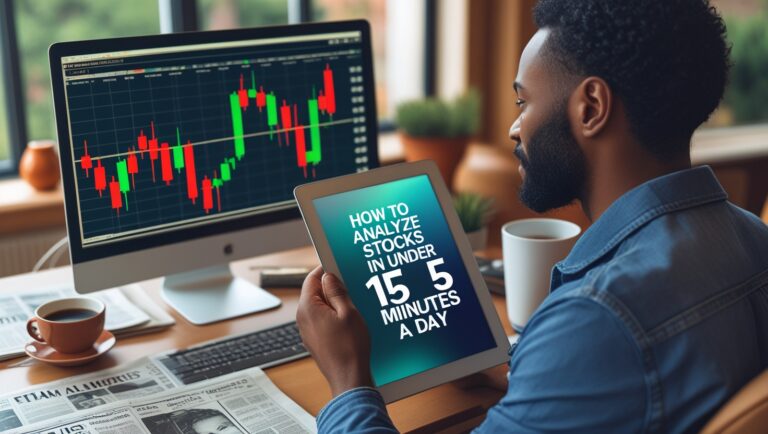How to Start Stock Trading and Avoid Common Mistakes
How to Start Stock Trading and Avoid Common Mistakes
New to investing? Learn how to start stock trading the right way while avoiding the most common beginner mistakes. A simple, beginner-friendly guide with tools and tips to grow your money safely.

Table of Contents
When I first started trading stocks, I’ll be honest—I made every mistake you can think of. I bought stocks based on hype, I sold too early when they dipped, and I didn’t have a real plan. It cost me money, but it also taught me valuable lessons. That’s why I wanted to put together this guide: to show you how to start stock trading while also helping you avoid the same mistakes I made.
Trading stocks doesn’t have to be scary or complicated. With the right mindset, tools, and strategy, you can start small, grow your confidence, and avoid losing money to rookie errors.
Step 1: Open the Right Trading Account
The first step is opening a brokerage account where you can buy and sell stocks. Personally, I started with Robinhood because it was simple to use, and later I added Webull for better charting tools. Both are beginner-friendly and even give you free stocks when you sign up.
For charting and research, I highly recommend TradingView. It’s one of the best platforms for analyzing stocks, setting alerts, and building watchlists without feeling overwhelmed.
Step 2: Learn Before You Trade Big
When I jumped into trading, I thought I could just “figure it out as I went.” That was a mistake. Trading requires a foundation of knowledge—basic strategies, how to read charts, and how to manage risk.
That’s why I put together my ebook. It’s a step-by-step guide based on how I personally use stock trading to pay bills and build consistent income. If I had something like this when I started, I could have saved myself a lot of frustration.
Common Mistakes Beginners Make (and How to Avoid Them)
One of the biggest mistakes is trading on emotions. I used to panic when a stock dropped a few dollars, and I would sell too quickly. Later, I realized those dips were normal. If I had just held on, I would’ve made much more.
Another mistake is putting all your money into one stock. Diversification matters, even for traders. Having multiple positions reduces risk in case one stock doesn’t move the way you expected.
Chasing hype is another trap. If you’re buying because you saw it trending on TikTok or Twitter, chances are you’re already late. Instead, learn to research and plan your entries.
Tips That Helped Me Succeed
I started small, trading with amounts I was comfortable losing. That way, mistakes became lessons instead of disasters.
I also created rules for myself. For example, I never risk more than 2–3% of my account on one trade. This protects me from big losses.
Another habit I developed was journaling every trade. Writing down why I entered, how I felt, and how the trade turned out gave me patterns to learn from.
Building the Right Mindset
Stock trading is not a lottery ticket. It’s about discipline, patience, and learning. If you treat it like a get-rich-quick scheme, you’ll end up disappointed. But if you treat it like a skill, it can absolutely create wealth and even passive income.
The truth is, you will make mistakes—I still do. But the goal is to make smaller mistakes while you learn and avoid repeating them.
Final Thoughts
If you’re just starting out, remember: you don’t have to trade with big money, and you don’t have to be perfect. Start small, learn consistently, and focus on avoiding the common mistakes that cost beginners the most.
To make your journey easier, grab my ebook here—it’s written for beginners like you who want to use stock trading to build real financial freedom.
And if you’re ready to start today, check out Robinhood and Webull for beginner-friendly trading accounts, and use TradingView to track your trades like a pro.
When I first started trading, I thought the hardest part would be finding the “right stock.” But over time, I realized the real challenge is controlling your emotions. Fear and greed are what ruin most beginners. Learning to stay calm during market swings made a huge difference in my results.
Another mistake I made early on was trading too often. I thought the more trades I placed, the more money I’d make. In reality, overtrading drained my account with fees and bad decisions. Now, I focus on quality setups instead of chasing every move.
I also underestimated how important risk management is. It’s not just about picking winning stocks—it’s about protecting your money when trades don’t go your way. That’s why I now set stop-loss orders and stick to them.
One thing that helped me was setting realistic expectations. At first, I thought I’d double my money in a few weeks. That mindset led to reckless trades. Once I shifted my perspective to consistent small wins, I started seeing steady progress.
Research is another area where beginners slip up. Many rely on social media hype, but I learned the hard way that hype usually comes late. Using tools like TradingView helped me actually study price action instead of blindly following trends.
Journaling became a game changer for me. Writing down what I bought, why I bought it, and how it turned out showed me patterns in my behavior. It exposed my emotional decisions and taught me how to improve.
I can’t stress enough the value of starting small. When I began with $50 or $100 trades, mistakes didn’t wipe me out. They became cheap lessons. I treated those early losses as tuition for learning the market.
Another mistake I made was ignoring diversification. Putting all your money in one stock feels exciting, but it’s dangerous. Even great companies can drop. Spreading investments across different sectors kept my account safer.
Having a mentor or a guide also speeds up the learning curve. I didn’t have one at first, and I wasted a lot of time. That’s why I wrote my ebook—so beginners don’t have to struggle like I did.
Patience is underrated. Most of my worst trades came from rushing. The market will always give you new opportunities, so there’s no need to force trades. Waiting for good setups is often the difference between profit and loss.
I also learned to protect my mental health. Staring at charts all day made me anxious. Setting screen-time limits and stepping away helped me trade with a clearer head.
Another tip: never trade with money you can’t afford to lose. If your rent or bills depend on it, you’ll trade emotionally. I only risk money that I’ve budgeted for investing, which takes off the pressure.
Community is powerful too. Joining trading groups and forums gave me new ideas, but I also learned to be selective. Not all advice is good advice, so I always double-check with my own research.
Keeping things simple has also helped me. At first, I overloaded myself with dozens of indicators. Now, I stick with a few basics like moving averages and volume. Simplicity keeps me from second-guessing.
Finally, I treat trading like a skill. Just like learning an instrument or a sport, it takes time and practice. The more I trade with discipline, the more confident and profitable I become.

Stay ahead in the stock market! Subscribe to our newsletter and receive exclusive stock flow reports, trading insights, and actionable tips directly in your inbox. Join thousands of traders who get our updates first.







